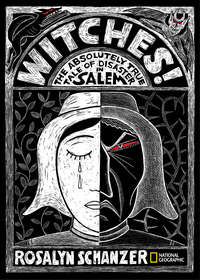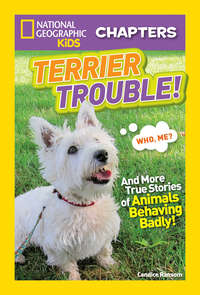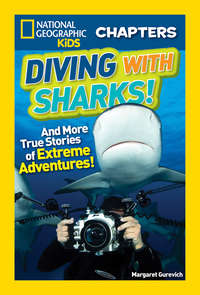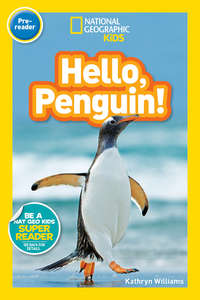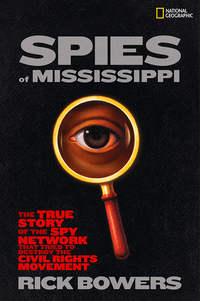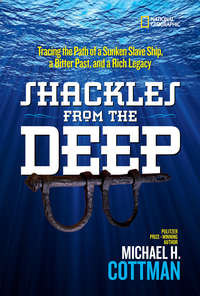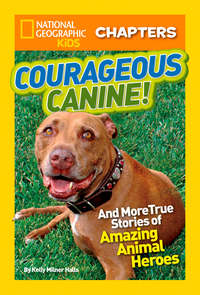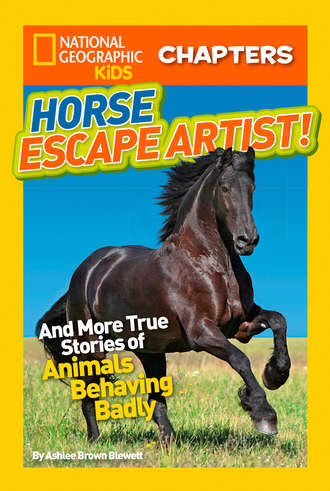
Полная версия
National Geographic Kids Chapters: Horse Escape Artist: And More True Stories of Animals Behaving Badly

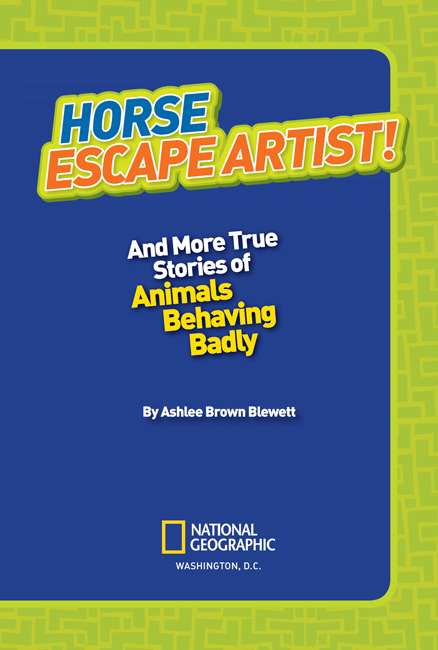
Copyright © 2014 National Geographic Society
All rights reserved. Reproduction of the whole or any part of the contents without written permission from the publisher is prohibited.
Published by the National Geographic Society
John M. Fahey, Chairman of the Board and Chief Executive Officer
Declan Moore, Executive Vice President; President, Publishing and Travel
Melina Gerosa Bellows, Publisher and Chief Creative Officer, Books, Kids, and Family
Prepared by the Book Division
Hector Sierra, Senior Vice President and General Manager
Nancy Laties Feresten, Senior Vice President, Kids Publishing and Media
Jennifer Emmett, Vice President, Editorial Director, Kids Books
Eva Absher-Schantz, Design Director, Kids Publishing and Media
Jay Sumner, Director of Photography, Kids Publishing
R. Gary Colbert, Production Director
Jennifer A. Thornton, Director of Managing Editorial
Staff for This Book
Shelby Alinsky, Project Editor
Lisa Jewell, Illustrations Editor
Amanda Larsen, Art Director
Ruth Ann Thompson, Designer
Grace Hill, Associate Managing Editor
Michael O’Connor, Production Editor
Marfé Ferguson Delano, Editor
Lewis R. Bassford, Production Manager
Susan Borke, Legal and Business Affairs
Ariane Szu-Tu, Editorial Assistant
Callie Broaddus, Design Production Assistant
Margaret Leist, Photo Assistant
Production Services
Phillip L. Schlosser, Senior Vice President
Chris Brown, Vice President, NG Book Manufacturing
George Bounelis, Senior Production Manager
Nicole Elliott, Director of Production
Rachel Faulise, Manager
Robert L. Barr, Manager

The National Geographic Society is one of the world’s largest nonprofit scientific and educational organizations. Founded in 1888 to “increase and diffuse geographic knowledge,” the Society’s mission is to inspire people to care about the planet. It reaches more than 400 million people worldwide each month through its official journal, National Geographic, and other magazines; National Geographic Channel; television documentaries; music; radio; films; books; DVDs; maps; exhibitions; live events; school publishing programs; interactive media; and merchandise. National Geographic has funded more than 10,000 scientific research, conservation, and exploration projects and supports an education program promoting geographic literacy.
For more information, please visit www.nationalgeographic.com, call 1-800-NGS LINE (647-5463), or write to the following address:
National Geographic Society, 1145 17th Street N.W., Washington, D.C. 20036-4688 U.S.A.
Visit us online at
www.nationalgeographic.com/books
For librarians and teachers:
www.ngchildrensbooks.org
National Geographic supports K–12 educators with ELA Common Core Resources. Visit natgeoed.org/commoncore for more information.
More for kids from National Geographic: kids.nationalgeographic.com
For information about special discounts for bulk purchases, please contact National Geographic Books Special Sales: ngspecsales@ngs.org
For rights or permissions inquiries, please contact National Geographic Books Subsidiary Rights: ngbookrights@ngs.org
Trade paperback ISBN: 978-1-4263-1767-5
Reinforced library edition ISBN: 978-1-4263-1768-2
eBook ISBN: 978-1-4263-1769-9
v3.1
Version: 2017-07-10
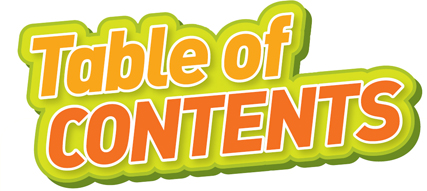
Cover
Title Page
Copyright
MARISKA: Horse Escape Artist
Chapter 1: A Fairy-Tale Horse
Chapter 2: A Puzzle Solved
Chapter 3: Panic!
MILKSHAKE: The Charging Cow
Chapter 1: No Ordinary Cow
Chapter 2: A Cow With a Grudge
Chapter 3: Water, Water, Everywhere!
PONY: The Runaway Goat
Chapter 1: Goats on the Loose!
Chapter 2: Three’s a Crowd
Chapter 3: Gate-Crashers!
Sneak Preview of The Whale Who Won Hearts!
More Information
Dedication
Credits
Acknowledgments
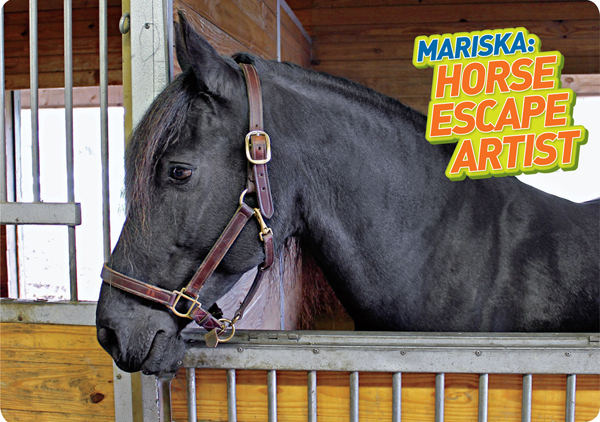
Mariska sticks her head out her stall-door window and tries to lift the door latch open.
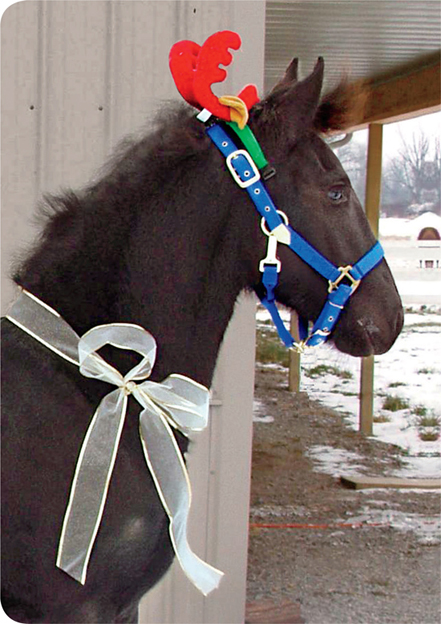
Mariska wears colorful reindeer antlers to celebrate her first Christmas at Misty Meadows Farm.
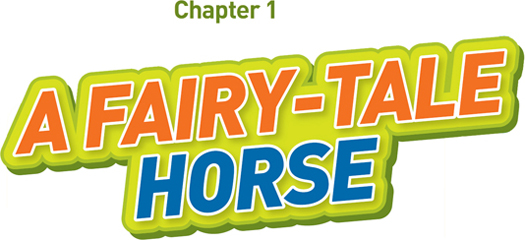
It was a sunny morning in Midland, Michigan, U.S.A.
A cool breeze blew through an open kitchen window at the Bonem home on Misty Meadows Farm. Mrs. Sandy Bonem was getting ready to cook breakfast.
Suddenly, a big black shadow loomed past the window. Wait! Make that three big black shadows. Mrs. Bonem glanced out the window, and her heart sank to her toes.
“HON!” she yelled across the house to her husband, Don Bonem. “The horses are out! They’re in the backyard!”
Mrs. Bonem dashed to the back door. Slowly, she slid open the door and stepped onto the deck. “Trienke (sounds like TREN-kuh),” Mrs. Bonem called softly. She inched down the stairs. She stepped onto a thick bed of green grass and stopped. She didn’t want to startle the herd.
The horses’ ears twitched. They lifted their heads and turned toward the voice. Their bodies tensed. They could easily flee.
“Trienke, come,” Mrs. Bonem said.
For a split second nothing happened. Then, all three horses lunged. They sprinted toward Mrs. Bonem like a pack of playful puppies. They kissed her cheeks with their big wet horse lips.
“Oh you guys!” she said. She stroked their foreheads and exhaled a deep sigh of relief. “How did you get out here?” She turned toward the barn. “Let’s go,” she said. All three horses followed her.
Minutes later, Mrs. Bonem reached the large sliding barn door. It looked like a clever horse had nudged it open. Mrs. Bonem turned and eyed the herd. Trienke is a ten-year-old mare, or female. She’s the mother of the other two horses, Mariska (sounds like Muh-RIS-kah) and Wietse (sounds like WEET-sah).
Did You Know?
There are about 400 types, or breeds, of horses.
Trienke is the boss mare, or leader, of the herd. But Mrs. Bonem knew that Trienke didn’t always call the shots. Instead, Mrs. Bonem fingered Mariska as the guilty one. Mariska had a long record of making mischief.
The Misty Meadows horses are a breed known as Friesian (sounds like FREE-shun). Friesian horses come from Friesland (sounds like FREES-land)—a region of the Netherlands, a country in Europe. Friesians have all-black, shiny coats. And they’re strong.
Long ago, Friesian horses carried knights into battle. “They look like a fairy-tale horse,” Mrs. Bonem says. That’s what first made her fall in love with the breed.
When Mr. and Mrs. Bonem decided to buy their first horse, it was a Friesian, of course. But first they built a barn. And instead of building just one horse stall in it, they built ten. With the extra room, other people could pay the Bonems to keep their horses at Misty Meadows, too.
A short while later, a family that lived down the street asked the Bonems to keep their two quarter horses at Misty Meadows. And the Bonems bought Trienke, their first Friesian.
Trienke was five years old when the Bonems got her in 2003. The next spring she gave birth to Mariska. Now the Bonems had four horses to look after.
As a baby, Mariska was allowed out of her stall to roam the barn during the day. The young horse followed Mrs. Bonem everywhere.
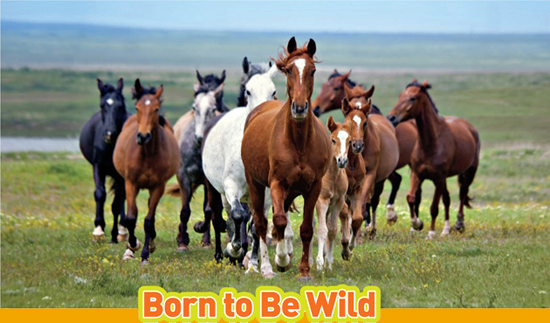
Wild horses live in family groups called herds. Herd members form strong bonds, or ties. They nuzzle each other’s faces and necks. Each herd member has a specific place, or rank, in the group. The same is true for pet horses. The horses higher up in rank protect those lower down the line. Horses like to be near other horses. This is true even if they’re not related. Pet horses even treat humans like members of their herd.
Soon Mariska had Mrs. Bonem’s heart wrapped around her tiny little hooves. Mariska’s antics, or pranks, began when she was about six months old. Mrs. Bonem entered the horse’s stall one morning. Mariska walked over. She nuzzled Mrs. Bonem’s neck. Then she wrapped her teeth around the zipper tab on Mrs. Bonem’s coat.
ZIP, ZIP! Mariska pulled the zipper up and down. Up and down. “You silly horse,” Mrs. Bonem said.
Next, Mariska targeted hair ties. Whenever Mrs. Bonem bent down to clean her stall, Mariska lurked nearby. With one yank she would pull the fluffy red or blue hair tie off of Mrs. Bonem’s ponytail. Then she’d try to eat it! Chomp, chomp.
Mrs. Bonem then had to pull the slimy lump of cloth out of Mariska’s mouth. “Errgh, Mariska. Yuck!” She’d say.
Later that year, Mariska gave the Bonems a big scare. Snow was beginning to fall at the farm. To celebrate Mariska’s first Christmas, Mrs. Bonem bought a pair of red-and-green reindeer antlers with small jingle bells attached to them.
Mrs. Bonem planned to take a picture of Mariska wearing the antlers. She headed to the barn with her camera. She laid the antlers on the windowsill and began brushing Mariska’s coat. Mariska eyed the antlers. She inched toward the window. Then she snatched the antlers. Ching, ching!
“Mariska, NO!” Mrs. Bonem said. She tugged on the antlers. Mariska let go. But one of the jingle bells was missing.
Mrs. Bonem pried open Mariska’s mouth and felt around with her hand. It’s got to be in here somewhere, she thought. GULP. Mariska swallowed the jingle bell. Mrs. Bonem quickly called the doctor. Could a tiny jingle bell hurt Mariska? Luckily, the answer was no. Phew!
Mariska’s minor pranks continued for a few more years. She zipped and unzipped coats. She snatched lots of hair ties. She even learned to nudge open the grain bin and sneak extra meals. With each new trick Mariska learned, she got better at using her teeth. But as Mariska grew older, she got bored with zippers and hair ties. She was ready for a bigger challenge.
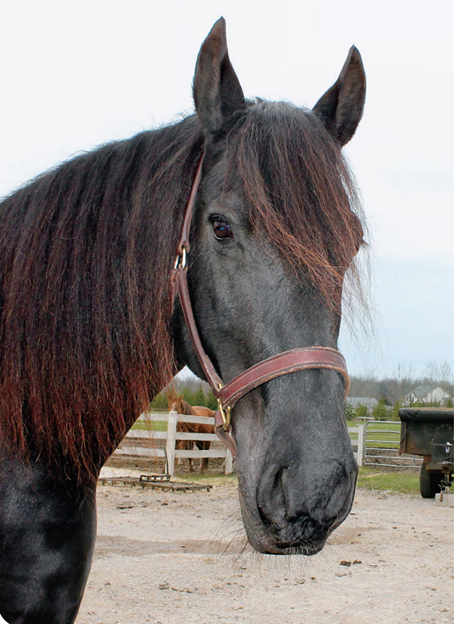
It looks like something has caught Mariska’s eye. Watch out—she might be dreaming up her next prank!
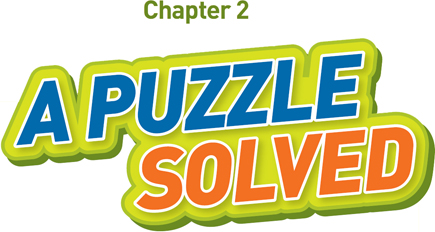
When Mariska was three years old, Trienke gave birth to another foal, or baby horse. The Bonems named the little male Wietse. Not long afterward, Mariska had a foal of her own—a male named Arie.
Mariska played with Arie. She looked after him. For nearly a year, the foal even distracted Mariska from her silly games. Then a loving family from Florida adopted Arie. Soon after that, Mariska returned to making mischief.
One spring day in March 2009, Mrs. Bonem walked out to the barn. She threw some hay into each stall and flipped open the stall-door windows. As soon as Mrs. Bonem was out of sight, Mariska leaned out her window. She eyed the silver bolt that locked her door shut.
Did You Know?
Horses have the largest eyes of any land mammal.
Mariska had seen Mrs. Bonem unlock this latch hundreds of times. Now, the horse grabbed the bolt with her teeth. She flipped it up and down. Finally, she slid the bolt over. CLICK! The door opened. Mariska escaped into the small paddock (sounds like PAD-ock), or fenced-in area, outside her stall.
A short while later, Mrs. Bonem walked past. That’s strange, she thought. Did I forget to lock the door? She led Mariska into her stall and slid the bolt into place. Mariska slid it back. CLICK! The door opened again.
“You clever horse!” Mrs. Bonem gasped.
The next day, Mr. Bonem attached a second bolt to the bottom of Mariska’s door. There’s no way Mariska can reach this bolt, he thought. Mariska tried another tactic. She unlocked the top bolt. Then she leaned hard against the door.
Mariska knew that if she pushed hard enough, things might break. She had learned this a few years ago, when she and the other Friesians wanted to eat the grass on the other side of their paddock. They craned their necks over the fence. They leaned hard against the wood, trying to reach the grass. Then, SNAP! The fence board broke.
Now one bolt stood between Mariska and the paddock. She leaned hard against the door. Finally, the bottom bolt snapped. Mariska stepped into the paddock. Then she unlocked Trienke and Wietse’s stall doors. Now, all the Friesians were out.
Mr. and Mrs. Bonem’s jaws dropped. They threw their hands in the air. Finally they decided to leave Mariska’s outside stall door unlocked. It was better she escape to the paddock than break another door, they agreed.
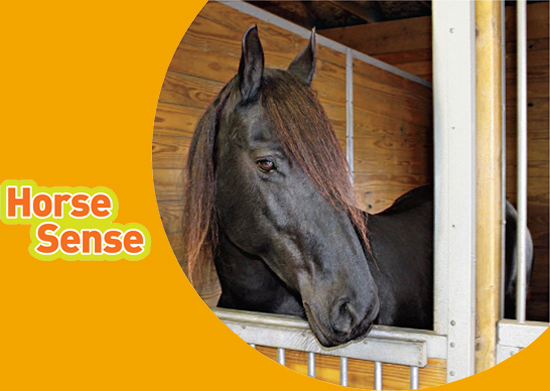
What do you do if faced with a problem? Probably you think about how to solve it. That’s what humans do. Not horses, says horse behavior expert Dr. Cindy McCall. Horses learn through trial and error. Dr. McCall thinks Mariska probably first opened her stall door by accident. She was playing with the latch, and it flipped open. “But that doesn’t mean horses aren’t smart,” Dr. McCall says. Horses have good memories. Once Mariska learned to open her door, doing it again was a breeze.
But Mariska had other plans. She shifted her attention to her inside stall door. Instead of leading outside into the paddock, this door led into the main aisle of the barn. That’s where the Bonems kept the grain.
Mariska wrapped her teeth around the thin bar that locked this door in place. The bar was slippery. But Mariska kept trying. Finally, she lifted the bar toward the ceiling. CLICK! The door slid open.
Mariska made a beeline to the grain bin. She flipped open the lid. Chomp, chomp.
Now Mr. and Mrs. Bonem started to worry. Inside the barn, Mariska could make real trouble. She could cross the aisle and open the quarter horses’ stall doors, too. But how could they stop her from escaping? They thought and thought.
Meanwhile, they tried to horse-proof the barn. First, they chained the grain bin under the counter. But Mariska broke the chain. Next, they poured the grain into an empty freezer chest in another room. Mariska quickly sniffed it out. For every move the Bonems made, Mariska had an answer.
That’s enough! thought Mr. Bonem. He slung a heavy chain around the grain-room door and locked it with a padlock. Take that, Mariska!
But Mariska just moved on to another prank. She escaped her stall again. This time she nudged open the large sliding barn door that leads to the Bonems’ backyard. That’s when Mrs. Bonem found Mariska, Trienke, and Wietse looming outside her kitchen window that sunny spring morning.
Конец ознакомительного фрагмента.
Текст предоставлен ООО «ЛитРес».
Прочитайте эту книгу целиком, купив полную легальную версию на ЛитРес.
Безопасно оплатить книгу можно банковской картой Visa, MasterCard, Maestro, со счета мобильного телефона, с платежного терминала, в салоне МТС или Связной, через PayPal, WebMoney, Яндекс.Деньги, QIWI Кошелек, бонусными картами или другим удобным Вам способом.




